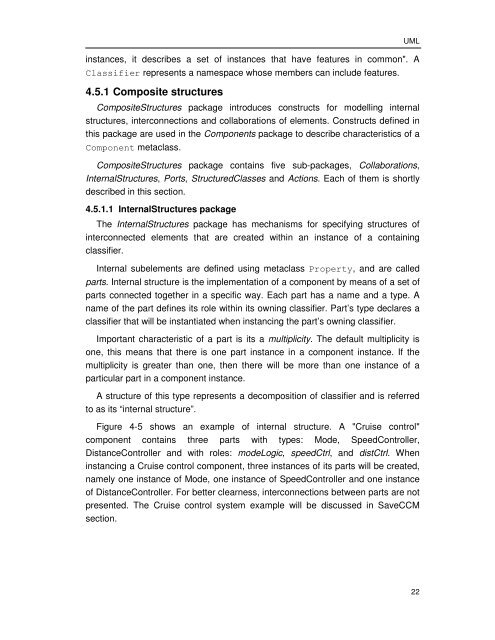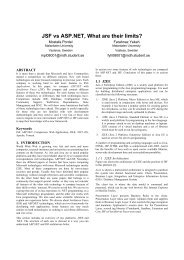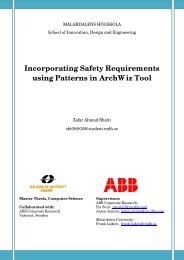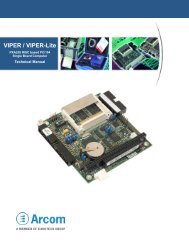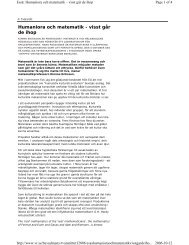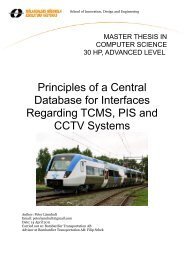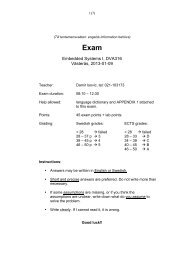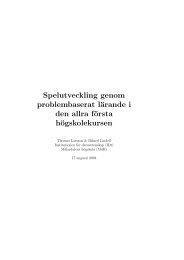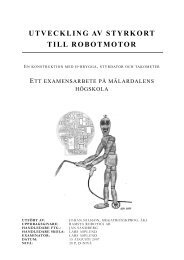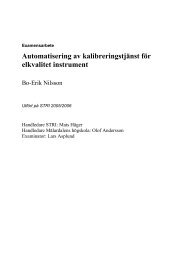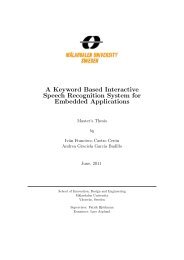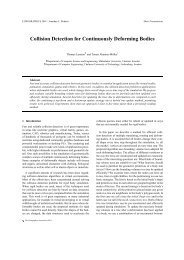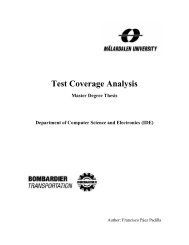UML PROFILE FOR SAVECCM - Research
UML PROFILE FOR SAVECCM - Research
UML PROFILE FOR SAVECCM - Research
Create successful ePaper yourself
Turn your PDF publications into a flip-book with our unique Google optimized e-Paper software.
<strong>UML</strong><br />
instances, it describes a set of instances that have features in common". A<br />
Classifier represents a namespace whose members can include features.<br />
4.5.1 Composite structures<br />
CompositeStructures package introduces constructs for modelling internal<br />
structures, interconnections and collaborations of elements. Constructs defined in<br />
this package are used in the Components package to describe characteristics of a<br />
Component metaclass.<br />
CompositeStructures package contains five sub-packages, Collaborations,<br />
InternalStructures, Ports, StructuredClasses and Actions. Each of them is shortly<br />
described in this section.<br />
4.5.1.1 InternalStructures package<br />
The InternalStructures package has mechanisms for specifying structures of<br />
interconnected elements that are created within an instance of a containing<br />
classifier.<br />
Internal subelements are defined using metaclass Property, and are called<br />
parts. Internal structure is the implementation of a component by means of a set of<br />
parts connected together in a specific way. Each part has a name and a type. A<br />
name of the part defines its role within its owning classifier. Part’s type declares a<br />
classifier that will be instantiated when instancing the part’s owning classifier.<br />
Important characteristic of a part is its a multiplicity. The default multiplicity is<br />
one, this means that there is one part instance in a component instance. If the<br />
multiplicity is greater than one, then there will be more than one instance of a<br />
particular part in a component instance.<br />
A structure of this type represents a decomposition of classifier and is referred<br />
to as its “internal structure”.<br />
Figure 4-5 shows an example of internal structure. A "Cruise control"<br />
component contains three parts with types: Mode, SpeedController,<br />
DistanceController and with roles: modeLogic, speedCtrl, and distCtrl. When<br />
instancing a Cruise control component, three instances of its parts will be created,<br />
namely one instance of Mode, one instance of SpeedController and one instance<br />
of DistanceController. For better clearness, interconnections between parts are not<br />
presented. The Cruise control system example will be discussed in SaveCCM<br />
section.<br />
22


